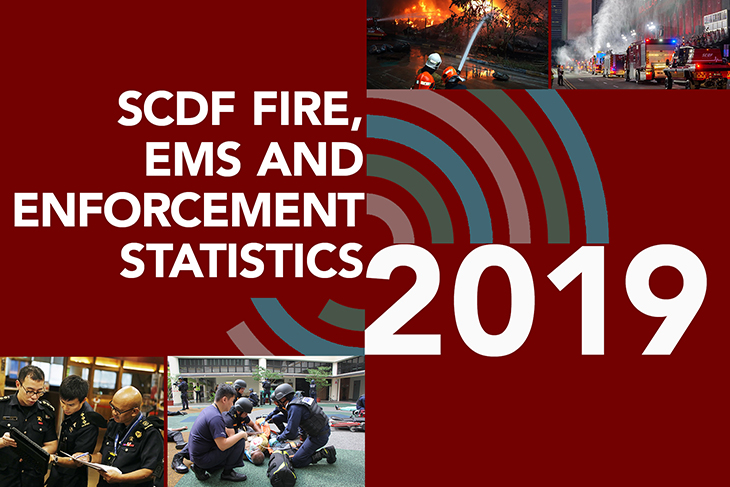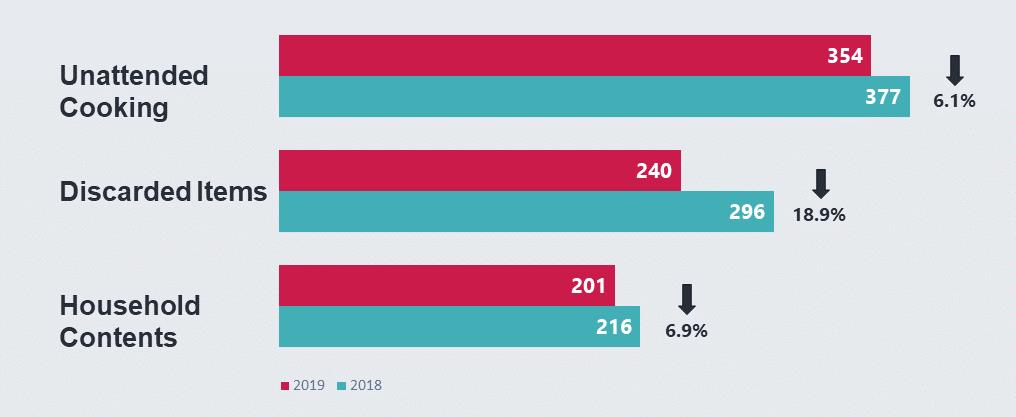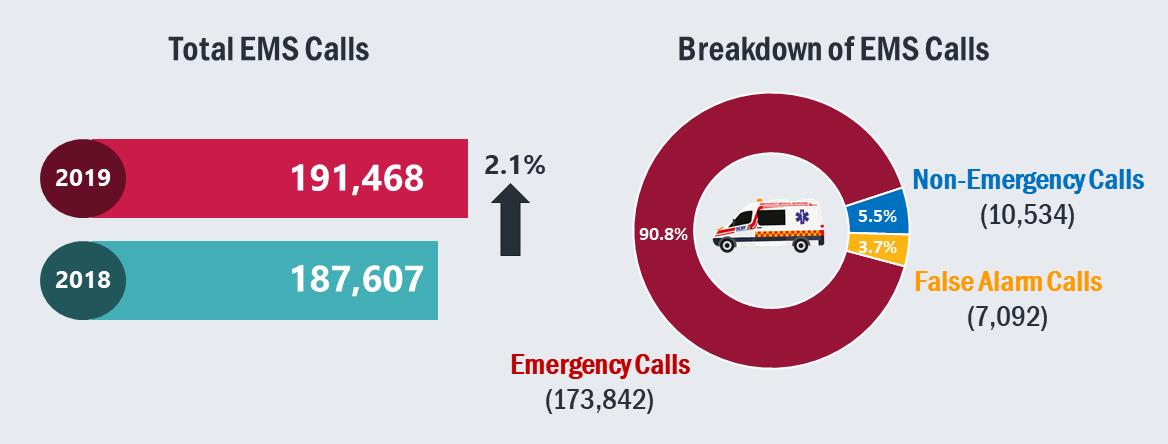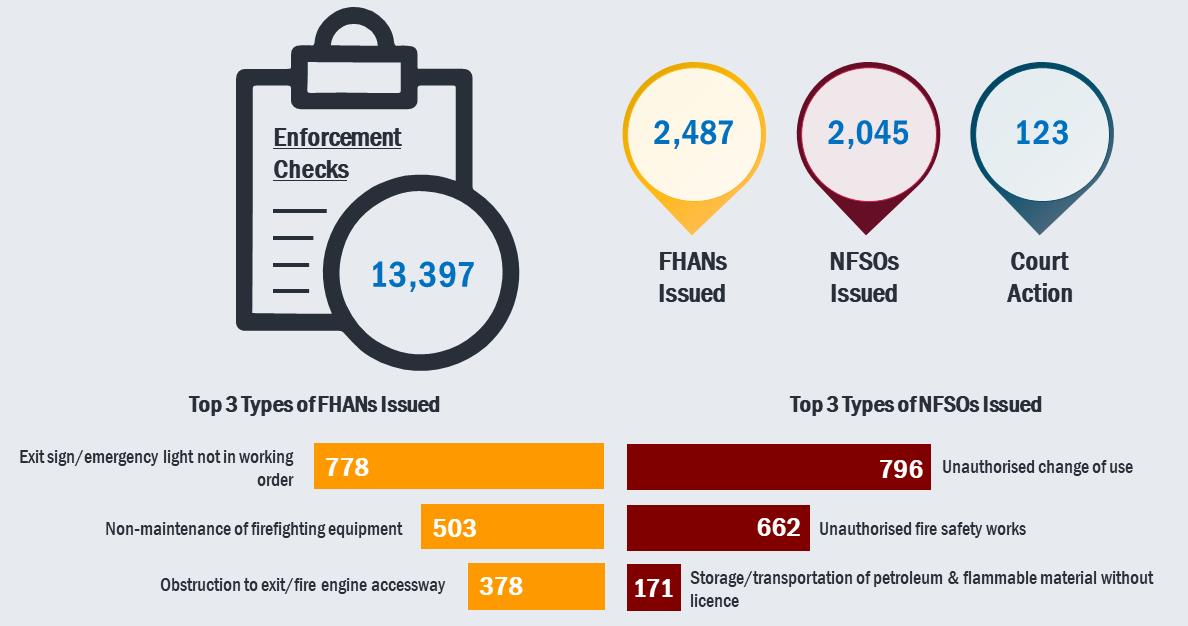
In its
Fire, Emergency Medical Services (EMS) and Enforcement Statistics 2019 report, the
Singapore Civil Defence Force (SCDF) highlighted its lifesaving initiatives over the past year. Here are our top five takeaways from SCDF’s 2019 report.
1. There were more fire incidents in 2019
SCDF responded to 2,862 fire calls in 2019, which was a 7.8% increase from 2018. This increase in calls can be attributed to a rise in the number of vegetation fires, which comprised 30.9% of fire calls that SCDF received in 2019.
Dropped light cases,
such as the improper disposal of cigarette butts, remained the leading cause of fires, accounting for 1,050 cases (or 36.7%) of all fires in 2019.

Watch that stove: In 2019, the leading cause of fires in residential buildings was unattended cooking. GRAPHIC: SCDF
In 2019, SCDF responded to 1,168 fire incidents in residential premises (which includes both private and public housing). Overall, there were fewer fires in residential premises last year compared to 2018. Unattended cooking fires formed the largest component of fires in residential buildings, with 354 cases in 2019.
2. Fires involving Personal Mobility Devices (PMDs) remain a concern
In 2019, SCDF recorded 102 fires involving PMDs, a 96.2% increase from 2018. Of these 102 fires, 78 occurred at residential premises, with one fatal case.
While SCDF continues to highlight the fire safety risks associated with PMDs, we all have a part to play. Users of non-UL2272-certified PMDs should dispose of such devices at designated disposal points.
3. The number of EMS calls continues to rise
SCDF responded to 191,468 EMS calls in 2019, averaging 520 calls a day. This marks a continued increase in the demand for emergency services since 1998, with a 2.1% increase from 2018. The number of calls involving the elderly (aged 65 and above) remained the highest among all age categories, at 43.8%.

The volume of EMS calls that SCDF responded to continues to rise. GRAPHIC: SCDF
Non-emergency and false alarm calls remain a concern as they comprise 9.2% of all EMS calls received in 2019. This means that, on average, SCDF responded to 48 non-emergency or false alarm calls daily, expending resources that could otherwise have been used to attend to emergency cases.
For non-emergencies, members of the public should seek treatment at a nearby clinic or call 1777 for a non-emergency ambulance (at a fee). This enables SCDF to focus its resources on emergencies.
4. More volunteer responders are stepping up to save lives
Community partnerships remain a vital part of SCDF’s lifesaving efforts. To leverage community first response and increase the survival rate for cardiac arrest victims, in 2015, SCDF launched the
Save-A-Life (SAL) initiative, in collaboration with the
Ministry of Health, the
Singapore Heart Foundation and
People’s Association.
To date, over 4,900 Automated External Defibrillators (AEDs) have been installed island-wide and more than half a million people have been trained in CPR-AED skills. In 2019, SCDF sent out alerts for 3,917 suspected cardiac arrest cases, with 1,366 Community First Responders answering the call to respond. Kudos to our volunteer lifesavers!
5. Enforcement checks ensure that fire safety measures are adequate
Ensuring fire safety is a crucial aspect of SCDF’s work. In 2019, SCDF conducted 13,397 enforcement checks and issued 2,487 Fire Hazard Abatement Notices (FHANs) and 2,045 Notices of Fire Safety Offences (NFSOs).

Enforcement checks are a regular part of SCDF’s work, and help to ensure fire safety measures are adequate. GRAPHIC: SCDF
FHANs are warnings given to building owners and management to rectify fire hazards. The most common fire hazard in 2019 was the non-functioning of exit signs or emergency lights, which contributed to 31.3% of the total FHANs issued.
NFSOs are issued when a safety breach is more severe, and warrants a hefty fine. The most common fire safety violation was the unauthorised change of use of premises, which would cause existing fire safety measures to become inadequate. This accounted for 38.9% of the NFSOs issued in 2019.
SCDF takes any non-compliance with fire safety regulations seriously and will not hesitate to take firm action against those who don’t make proper rectifications despite warnings and fines. Read
SCDF’s Fire, EMS and Enforcement Statistics 2019.










